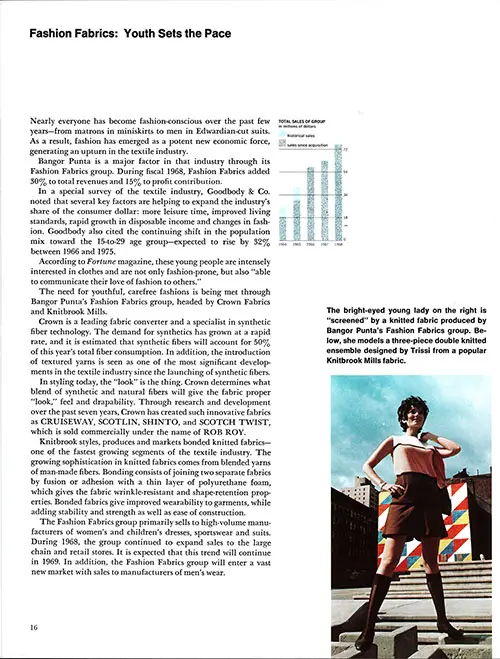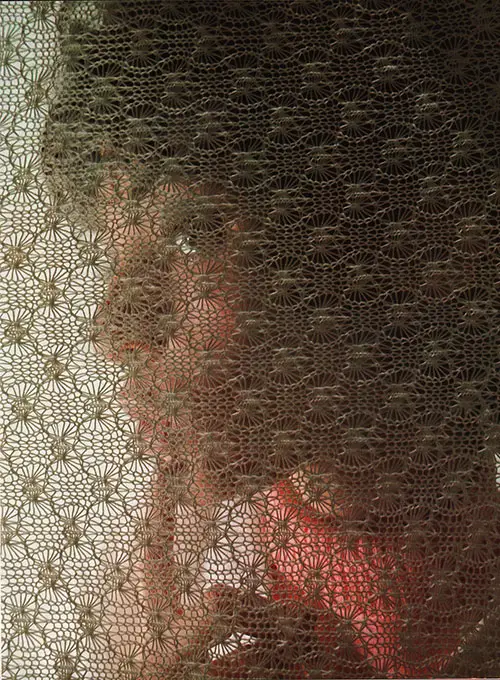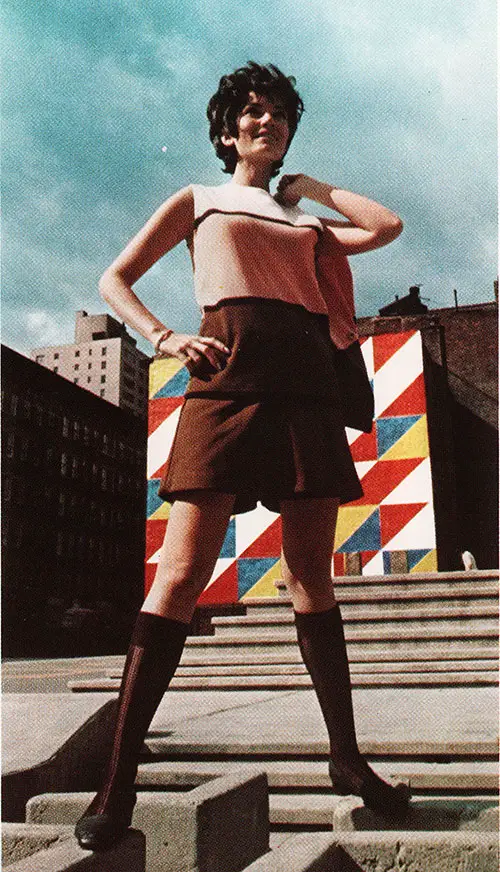Fashion Fabrics: Youth Sets the Pace
Nearly everyone has become fashion-conscious, from matrons in miniskirts to men in Edwardian-cut suits, over the past few years. As a result, fashion has emerged as a potent new economic force, generating an upturn in the textile industry.

Fashion Fabrics: Youth Sets the Pace. Bangor Punta Annual Report for the Year Ended September 30, 1968. | GGA Image ID # 213d5b1467
Bangor Punta is a significant factor in that industry through its Fashion Fabrics group. During fiscal 1968, Fashion Fabrics added 30% to total revenues and 15% to profit contribution.
In a unique survey of the textile industry, Goodbody & Co. noted that several key factors are helping to expand the industry's share of the consumer dollar: more leisure time, improved living standards, rapid growth in disposable income, and changes in fashion.
Goodbody also cited the continuing shift in the population mix toward the 15-to-29 age group—expected to rise by 32% between 1966 and 1975.
According to Fortune magazine, these young people are intensely interested in clothes. They are not only fashion-prone but also "able to communicate their love of fashion to others."

This Bright-Eyed Young Lady Is "Screened" by a Knitted Fabric Produced by Bangor Punta's Fashion Fabrics Group. | GGA Image ID # 213cec895d
The need for youthful, carefree fashions is being met through Bangor Punta's Fashion Fabrics group, headed by Crown Fabrics and Knitbrook Mills.
Crown is a leading fabric converter and a specialist in synthetic fiber technology. The demand for synthetic fibers has grown rapidly, and it is estimated that synthetic fibers will account for 50% of this year's total fiber consumption. In addition, the introduction of textured yarns is seen as one of the most significant developments in the textile industry since the launch of synthetic fibers.
In styling today, the "look" is everything. Crown determines what blend of synthetic and natural fibers will give the fabric a proper "look," feel, and drapability. Through research and development over the past seven years, Crown has created innovative fabrics such as CRUISEWAY, SCOTLIN, SHINTO, and SCOTCH TWIST, sold commercially under ROB ROY.

She Models a Three-Piece Double Knitted Ensemble Designed by Trissi From a Popular Knitbrook Mills Fabric. | GGA Image ID # 213d6e744c
Knitbrook Styles produces and markets bonded knitted fabrics—one of the fastest-growing segments of the textile industry. The growing sophistication in knitted fabrics comes from blended yarns of manufactured fibers.
Bonding consists of joining two separate fabrics by fusion or adhesion with a thin layer of polyurethane foam, which gives the fabric wrinkle-resistant and shape-retention properties. Bonded fabrics improve garments' wearability while adding stability, strength, and ease of construction.
The Fashion Fabrics group primarily sells to high-volume manufacturers of women's and children's dresses, sportswear, and suits. During 1968, the group continued to expand sales to large chains and retail stores. This trend is expected to continue in 1969. In addition, the fashion fabric group will enter a vast new market, selling to menswear manufacturers.
Bangor Punta Annual Report, 1968: 16-17.

